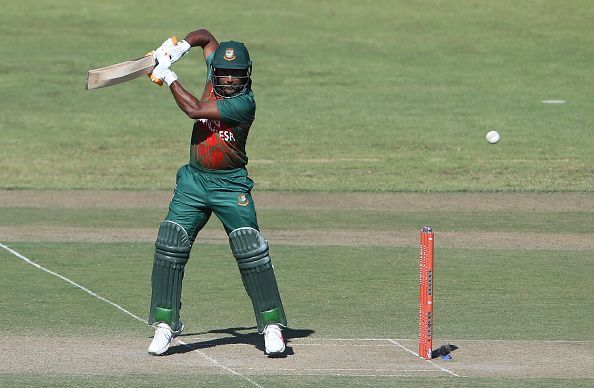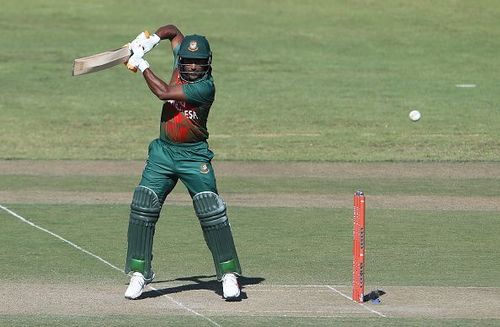
The transformation of Imrul Kayes is more than just runs

During the Asia Cup, when there were whispers of the selectors calling Imrul Kayes to the main team, I told someone out of disdain that ‘if Imrul Kayes is the answer, then I don’t even want to know what the question is.’
Six matches later, the Bangladesh team without the left-handed batsman is unthinkable to me. And there is more to that than just the runs coming out from his bat.
Before being called up midway during the Asia Cup, Imrul Kayes last played an ODI in October 2017 in South Africa. Even there, he fared decently when the rest of his team-mates were bordering on disastrous.
With 100 runs from 3 ODIs against the Proteas, he was the second-highest run-getter for his team in the series. This is enough of a testament that he always had the ability to get runs for his team.
However, in South Africa, he scored them with a strike-rate of 79.36, which in this day and time, doesn’t suit the flow of ODIs.
Indeed, this is something that has always been the case with Kayes. In the modern day, a batsman with a low strike-rate in ODIs will always face a vicissitude as a repercussion.
Up until that point, Kayes’ strike-rate in ODIs was 67.93.
As a result, he was dropped from the starting XI for the entirety of the subsequent tri-nation ODI series against Sri Lanka and Zimbabwe in Bangladesh. He was also overlooked for the ODI series during the tour of West Indies a few months ago and then from the initial squad for the Asia Cup.
However, an injury to Tamim Iqbal and the lack of form of both Liton Das and Nazmul Hossain Shanto at the time opened up a spot. As a result, BCB, without consulting the coach or the captain, sent Imrul Kayes and Soumya Sarkar to the United Arab Emirates, a decision which might have irked captain Mashrafe Mortaza.
Unfortunately for the left-hander, he found himself in the middle of the power struggle between the team management and the board. Subsequently, in the match against Afghanistan, the management decided to send him at number 6.
It might have felt like a baffling move on the surface but if it is looked at with the glasses of an alternate theory of the management making a statement of power against the board, it made more sense.
After all, during a match, it is the captain – and, to an extent, the coach – responsible for the decisions.
In the middle of all this, Kayes came out and played the best ODI innings of his life as he ended up unbeaten with 72 runs to his name from 89 balls. His innings helped Bangladesh reach 249 runs in 50 overs from 87-5 after 20.5 overs and win the match by a small margin of 3 runs in the end.
The way he played that innings, it was apparent that he was there to stay and that no matter how much the odds and situation are stacked against him – he was playing an ODI after almost a year and that, too, in an unfamiliar lower-middle-order position when his team were lingering in the dungeons of doom – he would come out victorious.
Since then, he hasn’t looked back.
Six matches, six innings, 432 runs, 86.84 average and 91.13 strike-rate. Leave everything else, just look at the strike-rate. All his career, he played at a rate of less than 70 runs per 100 balls.
In the last six games, it increased to above 90. His body language while batting is that of a man who has no fear about anything anymore. In the third ODI against Zimbabwe, he smashed the ball in the air and could have been caught four times had the ball been 2-3 foot below or to the left on any one of the occasions.
Despite so many heart-in-the-mouth moments, Kayes didn’t stop playing his shots. He continued piling the pressure on the Zimbabwean bowlers and ensured that the required-rate never went above six runs an over.
The Kayes of old would have taken his time to build the innings and batted in a way to seal his spot in the team first. However, that Kayes is long gone, this new one puts his team first and plays fearlessly without thinking about his place in the next game.
And with the way he has responded after coming back in the Asia Cup, there should be no discussion about whether he should be in the team or not. Right now, this team is unthinkable without him.
Furthermore, his participation in Soumya Sarkar’s brilliant innings was also a sight to behold. Kayes knows all about the plight that Soumya was in prior to that game as he has also been in the same boat.
He knew how much of a hit the confidence takes when someone’s form continues falling down the abyss. As a result, he is also aware of how to support someone in that position.
He constantly spoke to Sarkar and was appreciative of all the shots that went to the boundary, even if it wasn’t timed well. Batting becomes a lot easier with a partner like that on the other end and Kayes ensured that the seemingly low-on-confidence Soumya Sarkar had the best possible conditions to thrive in.
Kayes was the hand of light that supported Soumya Sarkar out of the ever-consuming void. He was the leader on the pitch while batting – and that is something that Bangladesh always lack without Tamim Iqbal.
The left-hander’s transformation is more than just runs as not only has he scored them at a quicker rate, he has also acted as a leader with his batting gloves on. Form comes and goes but attitude always sticks.
And this Imrul Kayes has the attitude of a tiger.